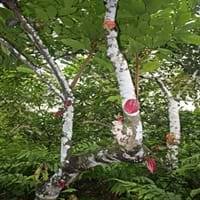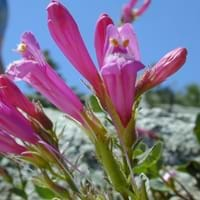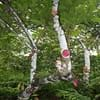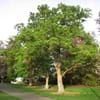Life Span
Perennial
Perennial
Origin
Mexico, Central America
Southwestern United States, Mexico
Types
Criollo, Forastero, Trinitario
Not Available
Number of Varieties
Not Available
Habitat
Lowland, Tropical rainforest, Tropical regions
Wild
USDA Hardiness Zone
11-15
8-10
Sunset Zone
H1, H2
10, 11, 12, 13
Habit
Oval or Rounded
Clump-Forming
Flower Color
White
Hot Pink
Flower Color Modifier
Bicolor
Bicolor
Fruit Color
Gold, Burgundy, Dark Red
Brown
Leaf Color in Spring
Light Green, Dark Green, Pink, Copper
Blue Green, Gray Green
Leaf Color in Summer
Light Green, Dark Green, Copper
Blue Green, Gray Green
Leaf Color in Fall
Light Green, Dark Green
Blue Green, Gray Green
Leaf Color in Winter
Dark Green
Not Available
Leaf Shape
Broad, Unlobed
Lance shaped
Plant Season
Spring, Summer, Fall, Winter
Spring, Winter
Sunlight
Partial Sun
Full Sun
Type of Soil
Loam, Sand
Sand
The pH of Soil
Acidic, Neutral
Neutral, Alkaline
Soil Drainage
Well drained
Well drained
Bloom Time
Indeterminate
Early Spring, Spring, Late Spring, Late Winter
Tolerances
Not Available
Not Available
Where to Plant?
Ground
Container, Ground
How to Plant?
Seedlings, Stem Planting
Seedlings
Plant Maintenance
Medium
Medium
Watering Requirements
Keep ground moist, Requires watering in the growing season
occasional watering once established
In Summer
Lots of watering
Lots of watering
In Spring
Moderate
Moderate
In Winter
Average Water
Average Water
Soil pH
Acidic, Neutral
Neutral, Alkaline
Soil Type
Loam, Sand
Sand
Soil Drainage Capacity
Well drained
Well drained
Sun Exposure
Partial Sun
Full Sun
Pruning
Prune to stimulate growth, Prune twice a year, Remove damaged leaves, Remove dead branches, Remove dead leaves
Remove damaged leaves, Remove dead branches, Remove dead leaves
Fertilizers
Ammonia sulphate, Nitrogen
All-Purpose Liquid Fertilizer
Pests and Diseases
Borers, Insects, Phytophthora, Red blotch
Red blotch
Plant Tolerance
Shade areas, Wet Site
Drought
Flower Petal Number
Single
Single
Foliage Texture
Coarse
Medium
Foliage Sheen
Glossy
Matte
Attracts
Not Available
Hummingbirds
Allergy
Diabetes, Diarrhea
poisonous if ingested
Aesthetic Uses
Not Used For Aesthetic Purpose
Borders, Showy Purposes
Beauty Benefits
Not Available
Not Available
Environmental Uses
Air purification
Air purification
Medicinal Uses
Anti-oxidant, Antioxidants, Asthma, Cancer, Cardiovascular problems, constipation, High cholestrol, Wounds
constipation, Stomach pain, Swelling, Wounds
Part of Plant Used
Leaves, Seeds
Flowers, Leaves, Stem
Other Uses
Employed in herbal medicine, Used for its medicinal properties, Used in making beverages
Showy Purposes, Used as Ornamental plant
Used As Indoor Plant
No
Yes
Used As Outdoor Plant
Yes
Yes
Garden Design
Edible, Feature Plant, Fruit / Fruit Tree, Shade Trees, Tropical
Cutflower, Mixed Border, Rock Garden / Wall, Wildflower
Botanical Name
THEOBROMA cacao
PENSTEMON parryi
Common Name
Cacao, Chocolate, Cocoa
Parry's Beardtongue
In Hindi
कोको संयंत्र
penstemon parryi
In German
Kakaopflanze
penstemon parryi
In French
usine de cacao
penstemon parryi
In Spanish
planta del cacao
parryi penstemon
In Greek
φυτό του κακάο
penstemon parryi
In Portuguese
planta do cacau
parryi penstemon
In Polish
Kakao roślin
penstemon parryi
In Latin
Cocos herba
Persicaria californicum
Phylum
Magnoliophyta
Magnoliophyta
Class
Magnoliopsida
Magnoliopsida
Family
Sterculiaceae
Scrophulariaceae
Genus
Theobroma
Penstemon
Clade
Angiosperms, Eudicots, Rosids
Angiosperms, Asterids, Eudicots
Tribe
Theobromeae
Not Available
Subfamily
Byttneroideae
Not Available
Number of Species
Not Available
Properties of Cocoa Plant and Penstemon Parryi
Wondering what are the properties of Cocoa Plant and Penstemon Parryi? We provide you with everything About Cocoa Plant and Penstemon Parryi. Cocoa Plant doesn't have thorns and Penstemon Parryi doesn't have thorns. Also Cocoa Plant does not have fragrant flowers. Cocoa Plant has allergic reactions like Diabetes and Diarrhea and Penstemon Parryi has allergic reactions like Diabetes and Diarrhea. Compare all the properties and characteristics of these two plants. Find out which of these plant can be used as indoor plant. If you are interested to decorate your house and garden, find out aesthetic uses, compare them and select the plant which will beautify your surrounding. Along with beautification, try comparing medicinal and edible uses of Cocoa Plant and Penstemon Parryi and you can choose the plant having best and most benefits.
Season and Care of Cocoa Plant and Penstemon Parryi
Season and care of Cocoa Plant and Penstemon Parryi is important to know. While considering everything about Cocoa Plant and Penstemon Parryi Care, growing season is an essential factor. Cocoa Plant season is Spring, Summer, Fall and Winter and Penstemon Parryi season is Spring, Summer, Fall and Winter. The type of soil for Cocoa Plant is Loam, Sand and for Penstemon Parryi is Sand while the PH of soil for Cocoa Plant is Acidic, Neutral and for Penstemon Parryi is Neutral, Alkaline.
Cocoa Plant and Penstemon Parryi Physical Information
Cocoa Plant and Penstemon Parryi physical information is very important for comparison. Cocoa Plant height is 610.00 cm and width 370.00 cm whereas Penstemon Parryi height is 90.00 cm and width 5.10 cm. The color specification of Cocoa Plant and Penstemon Parryi are as follows:
Cocoa Plant flower color: White
Cocoa Plant leaf color: Light Green, Dark Green, Pink and Copper
Penstemon Parryi flower color: Hot Pink
- Penstemon Parryi leaf color: Blue Green and Gray Green
Care of Cocoa Plant and Penstemon Parryi
Care of Cocoa Plant and Penstemon Parryi include pruning, fertilizers, watering etc. Cocoa Plant pruning is done Prune to stimulate growth, Prune twice a year, Remove damaged leaves, Remove dead branches and Remove dead leaves and Penstemon Parryi pruning is done Remove damaged leaves, Remove dead branches and Remove dead leaves. In summer Cocoa Plant needs Lots of watering and in winter, it needs Average Water. Whereas, in summer Penstemon Parryi needs Lots of watering and in winter, it needs Average Water.





